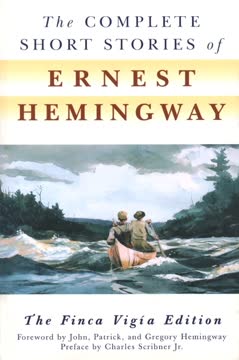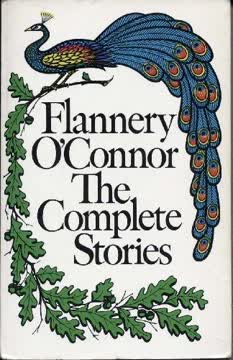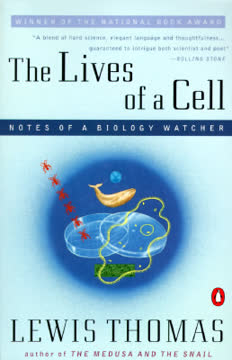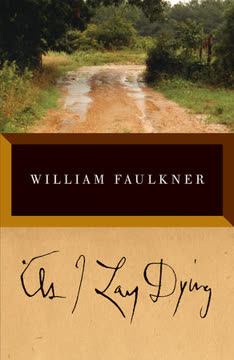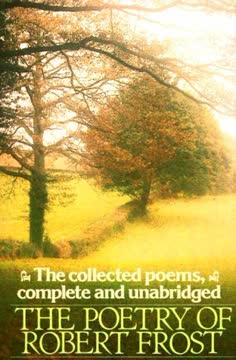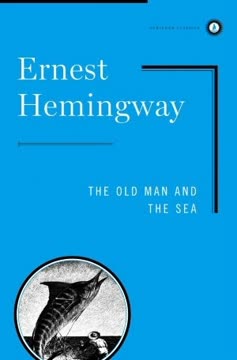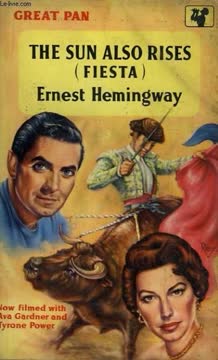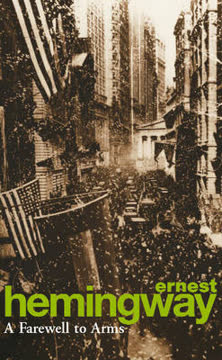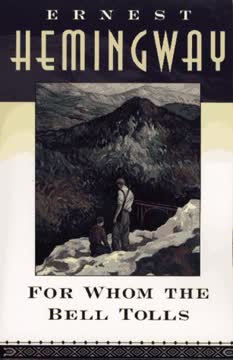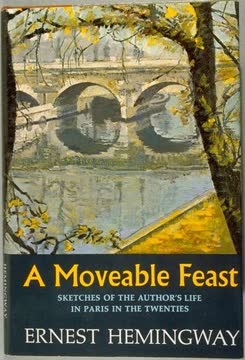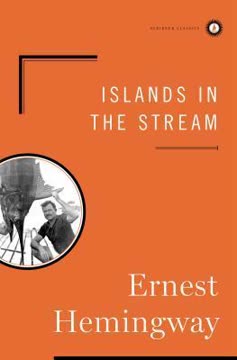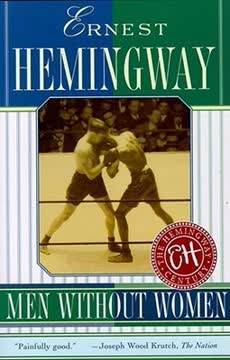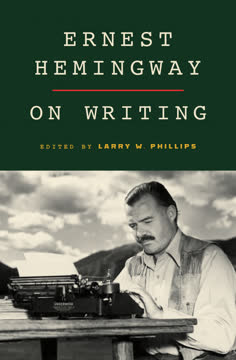Plot Summary
Shadows and Sunlight
Hemingway's stories unfold in a world where sunlight and shadow are more than mere settings—they are metaphors for the human condition. From the bright, harsh African plains to the dim, comforting corners of European cafés, his characters are caught between hope and despair, youth and age, innocence and experience. The stories move from the open, sunlit spaces of childhood and adventure to the closed, shadowed rooms of regret and memory. This interplay of light and darkness is not just visual but emotional, as characters seek clarity in a world that often offers only ambiguity. Whether it's the blinding sun of a Spanish bullring or the gentle dusk of a Michigan lake, Hemingway's landscapes mirror the internal struggles of his characters, who are forever searching for meaning in a world that is both beautiful and brutal.
Men at the Crossroads
Throughout Hemingway's stories, men and women find themselves at literal and figurative crossroads—moments where choices must be made, often under the pressure of war, love, or personal crisis. In "The Short Happy Life of Francis Macomber," a cowardly husband faces his own fear and the consequences of his wife's betrayal. In "The Killers," a boxer awaits his fate with stoic resignation. The crossroads are not just places but moments of reckoning, where the past and future collide, and where the smallest decision can mean life or death. Hemingway's characters are defined by how they meet these moments: with courage, denial, or sometimes, tragic acceptance. The stories ask: What does it mean to act, or to fail to act, when everything is at stake?
The Art of Losing
Loss permeates Hemingway's world—loss of love, youth, innocence, and life itself. In "The Snows of Kilimanjaro," a dying writer confronts the stories he never wrote and the life he never fully lived. In "A Clean, Well-Lighted Place," old men and young waiters alike grapple with the emptiness that comes with age and solitude. Hemingway's characters are often defined by what they have lost, and by how they carry that loss. Some, like the old man in "Old Man at the Bridge," are left with nothing but memories and regret. Others, like Nick Adams, learn to move forward, carrying their wounds with a quiet dignity. The art of losing, for Hemingway, is not about resignation but about endurance—about finding a way to live with what cannot be recovered.
War's Quiet Aftermath
Hemingway's stories are haunted by war—not just the violence of battle, but the quieter, more insidious wounds that linger long after the guns have fallen silent. In "Soldier's Home," a young man returns from World War I to a home that no longer feels like home. In "In Another Country," wounded soldiers struggle to find meaning in their injuries and in the machines that promise, but cannot deliver, healing. The war is never truly over for Hemingway's characters; it lives on in their bodies, their dreams, and their inability to connect with those who have not shared their experience. The stories capture the sense of dislocation and alienation that comes with survival, and the difficulty of finding peace in a world that has been irrevocably changed.
Love, Loss, and Longing
Love in Hemingway's stories is rarely simple or happy. It is often tinged with longing, regret, and the knowledge that happiness is fleeting. In "Hills Like White Elephants," a couple's conversation about an unnamed operation (an abortion) is a masterclass in subtext and emotional distance. In "Cat in the Rain," a woman's yearning for a cat becomes a symbol for all the things she cannot have. Relationships are marked by miscommunication, betrayal, and the slow erosion of intimacy. Yet, even in disappointment, there is a longing for connection—a hope that, despite everything, love might still be possible. Hemingway's lovers are always reaching for something just out of reach, haunted by what might have been.
The Code of Courage
Central to Hemingway's fiction is the idea of a personal code—a set of values that define what it means to be courageous, honorable, and true. Whether it's the bullfighter in "The Undefeated," the fisherman in "Big Two-Hearted River," or the soldiers in "A Way You'll Never Be," Hemingway's heroes are measured not by their victories but by their conduct in the face of adversity. The code is not about winning but about how one plays the game—about grace under pressure, dignity in defeat, and the refusal to give in to despair. This code is both a source of strength and a burden, as characters struggle to live up to their own ideals in a world that often seems indifferent to them.
The Weight of Silence
Hemingway's famous "iceberg theory" is on full display in his short stories, where what is left unsaid is often more important than what is spoken. Dialogue is spare, and meaning is found in pauses, gestures, and the spaces between words. In "Hills Like White Elephants," the true subject of the conversation is never named. In "A Simple Enquiry," the major's questions to his orderly are loaded with unspoken longing and fear. Silence is both a shield and a prison, protecting characters from pain but also isolating them from each other. Hemingway's mastery lies in his ability to suggest entire worlds of emotion and experience with the lightest of touches.
The End of Something
Change is inevitable in Hemingway's world, and with it comes the end of things once cherished. In "The End of Something," the closure of a mill mirrors the end of a young couple's relationship. In "The Three-Day Blow," two friends drink and talk their way through the aftermath of a breakup, trying to convince themselves that nothing is ever really lost. Endings are rarely clean or easy; they are messy, painful, and often leave characters adrift. Yet, in the aftermath, there is also the possibility of new beginnings—a sense that, even as one chapter closes, another might open.
The Rituals of Escape
Many of Hemingway's characters are on the run—from the law, from their pasts, or from themselves. In "The Battler," Nick Adams encounters a former prizefighter living on the margins of society. In "The Last Good Country," Nick and his sister flee into the woods to escape the authorities, seeking refuge in nature and in each other. Escape is both a physical act and a psychological necessity—a way of coping with a world that is often hostile and incomprehensible. Yet, escape is rarely complete; the past has a way of catching up, and freedom is always tinged with the knowledge of what has been left behind.
The Unforgiving Land
The natural world in Hemingway's stories is both beautiful and indifferent—a place of solace and of danger. In "Big Two-Hearted River," Nick Adams finds healing in the rituals of fishing and camping, but the land is also scarred by fire and loss. In "The Snows of Kilimanjaro," the African landscape is both a source of inspiration and a reminder of mortality. Nature offers the possibility of renewal, but it is never sentimentalized; it is a world where survival depends on skill, knowledge, and respect for forces beyond human control.
The Price of Betrayal
Betrayal is a recurring theme in Hemingway's stories, whether it is the infidelity of a spouse, the treachery of a friend, or the failure of a leader. In "The Short Happy Life of Francis Macomber," Margot's betrayal of her husband is both personal and existential, shattering the fragile code that holds their world together. In "The Denunciation," the act of informing on a friend becomes a test of conscience and loyalty. Betrayal is never just an individual act; it reverberates through families, friendships, and entire communities, leaving wounds that may never heal.
The Search for Meaning
Hemingway's characters are often searching for meaning in a world that offers few answers. In "A Clean, Well-Lighted Place," the old waiter and the old man find solace in the order and light of the café, even as they confront the nothingness at the heart of existence. In "God Rest You Merry, Gentlemen," a young man's religious fervor leads to tragedy. The stories are filled with questions about God, fate, and the purpose of life, but answers are elusive. Instead, meaning is found in small acts of kindness, in the rituals of daily life, and in the courage to go on despite uncertainty.
Fathers, Sons, and Ghosts
The relationship between fathers and sons is central to many of Hemingway's stories, particularly those featuring Nick Adams. In "Fathers and Sons," Nick reflects on his father's strengths and weaknesses, and on the ways in which the past continues to shape the present. The stories explore the transmission of values, the pain of misunderstanding, and the longing for connection across generations. Ghosts—both literal and metaphorical—haunt these stories, as characters struggle to come to terms with the legacies they have inherited and the losses they have endured.
The Unattainable Peace
Peace is always just out of reach in Hemingway's world. Whether it is the peace of a well-lighted café, the tranquility of a Michigan river, or the promise of love, it is always threatened by violence, loss, and the demands of the world. In "Now I Lay Me," the narrator cannot sleep for fear that his soul will leave his body. In "Summer People," the pleasures of youth and summer are shadowed by the knowledge that they cannot last. The stories capture the tension between the desire for rest and the inevitability of change, between the hope for happiness and the certainty of loss.
The Last Good Country
In "The Last Good Country," Nick Adams and his sister flee into the woods, seeking refuge from the adult world and its demands. The wilderness becomes a sanctuary—a place where innocence can be preserved, if only for a little while. Yet, even here, the pressures of the outside world intrude, and the idyll cannot last. The story is both a celebration of the beauty and freedom of childhood and a lament for its passing. The last good country is a place of memory and longing, a lost Eden that can never be fully regained.
The Unwritten Law
Hemingway's stories are filled with questions about right and wrong, about the laws that govern human behavior and the ways in which they can be bent or broken. In "The Last Good Country," Nick and his sister debate the ethics of killing and the meaning of justice. In "A Simple Enquiry," the boundaries between authority and desire are blurred. The stories suggest that the law is not always just, and that true morality lies in the choices individuals make when no one is watching. Forgiveness is possible, but it is never easy, and the cost of wrongdoing is often high.
The World at Night
Night is a time of vulnerability in Hemingway's stories—a time when fears surface, when the mind turns over old wounds, and when the need for comfort is most acute. In "A Clean, Well-Lighted Place," the café becomes a refuge from the darkness outside. In "Now I Lay Me," the narrator lies awake, haunted by memories and unable to find rest. The world at night is both a place of danger and a space for reflection, where characters confront their deepest fears and longings.
The Light in the Café
Amidst the chaos and uncertainty of the world, Hemingway's characters seek out small sanctuaries—places of order, light, and routine. The café in "A Clean, Well-Lighted Place" is one such refuge, a place where the rituals of serving and drinking offer a measure of comfort and stability. In "Wine of Wyoming," the rituals of food and drink become a way of coping with exile and loss. These sanctuaries are fragile, always threatened by the darkness outside, but they are also essential—a reminder that, even in a world of loss and suffering, there is still beauty, kindness, and the possibility of peace.
Characters
Nick Adams
Nick Adams is Hemingway's most enduring protagonist, appearing in stories from childhood through adulthood. He is a sensitive, introspective figure, shaped by the traumas of war, the pain of lost love, and the beauty of the natural world. Nick is both participant and observer, moving through landscapes of violence and tenderness, always searching for meaning in a world that often seems indifferent or hostile. His relationships—with his father, with women, with friends—are marked by longing, misunderstanding, and the desire for connection. Over time, Nick becomes a symbol of endurance, carrying his wounds with quiet dignity and learning, slowly, how to live with loss.
Francis Macomber
Francis Macomber is the protagonist of "The Short Happy Life of Francis Macomber," a man whose journey from cowardice to courage is both exhilarating and fatal. Trapped in a loveless marriage and humiliated by his own fear, Macomber finds redemption in a moment of bravery during a hunt. Yet, his newfound confidence is short-lived, cut down by his wife's bullet—whether accidental or intentional is left ambiguous. Macomber's story is a meditation on the nature of courage, the dynamics of power in relationships, and the tragic consequences of self-discovery.
Margot Macomber
Margot is Francis Macomber's wife, a beautiful, controlling woman whose relationship with her husband is defined by dominance and resentment. She is both victim and perpetrator, trapped in a marriage she cannot leave and determined to maintain her power at any cost. Margot's actions—her affair with the hunter Wilson, her final, fatal shot—are ambiguous, raising questions about motive, agency, and the destructive potential of love. She is one of Hemingway's most complex female characters, embodying both the allure and the danger of feminine power.
Robert Wilson
Wilson, the white hunter in "The Short Happy Life of Francis Macomber," is a man who lives by a strict personal code. He is competent, courageous, and emotionally detached, serving as both guide and judge for the Macombers. Wilson's perspective is shaped by his experiences in Africa and his understanding of the rules that govern both hunting and human relationships. He is both admired and resented by those around him, and his presence forces others to confront their own weaknesses and desires.
The Old Man (Old Man at the Bridge)
The old man in "Old Man at the Bridge" is a refugee, forced to leave his home and his animals by the advance of war. He is a figure of quiet dignity and resignation, embodying the suffering of civilians caught in the crossfire of history. His concern for his animals, his lack of politics, and his inability to move on make him a symbol of all those who are left behind by the march of events.
Harry (The Snows of Kilimanjaro)
Harry, the protagonist of "The Snows of Kilimanjaro," is a writer dying of gangrene on an African plain. As he faces death, he is haunted by memories of lost love, missed opportunities, and the stories he never wrote. Harry's psychological struggle is between self-pity and acceptance, between the desire for redemption and the knowledge that it is too late. His relationship with his wife is marked by bitterness and regret, and his final visions are both transcendent and tragic.
The American Girl and the Man (Hills Like White Elephants)
The unnamed couple in "Hills Like White Elephants" are locked in a conversation about an abortion that is never directly named. Their relationship is defined by miscommunication, avoidance, and the inability to bridge the gap between their desires. The girl is hesitant, longing for something more, while the man is insistent, focused on his own needs. Their dialogue is a masterclass in subtext, revealing the deep emotional rift between them.
The Waiters (A Clean, Well-Lighted Place)
The two waiters in "A Clean, Well-Lighted Place" represent opposing attitudes toward life. The younger waiter is impatient, confident, and dismissive of the old man's suffering. The older waiter is compassionate, introspective, and haunted by his own sense of nothingness. Their conversation explores themes of loneliness, meaning, and the small comforts that make life bearable.
Nick's Father
Nick's father appears in several stories as a figure of authority, wisdom, and, at times, cruelty. He is a skilled outdoorsman and a man of strong convictions, but his relationships are marked by misunderstanding and emotional distance. The legacy he leaves Nick is both a source of pride and a burden, shaping Nick's understanding of manhood, morality, and the complexities of family.
The Betrayer (Various Stories)
Throughout Hemingway's stories, the figure of the betrayer recurs—sometimes as a literal informer, sometimes as a friend or lover who breaks trust. This character is not always villainous; often, betrayal is the result of weakness, fear, or conflicting loyalties. The presence of the betrayer forces other characters to confront their own values and the limits of forgiveness.
Plot Devices
The Iceberg Theory
Hemingway's signature narrative device is his "iceberg theory"—the idea that the most important parts of a story are hidden beneath the surface. Dialogue is spare, description is minimal, and the reader is left to infer the deeper emotional and psychological currents at work. This technique creates a sense of realism and immediacy, drawing the reader into the world of the story and inviting them to participate in its creation.
Repetition and Ritual
Many of Hemingway's stories are structured around repeated actions and rituals—fishing, drinking, hunting, eating. These routines provide a sense of order and stability in a chaotic world, and they become a way for characters to cope with loss, fear, and uncertainty. The repetition of certain phrases, actions, and images also creates a sense of rhythm and unity across the stories.
Juxtaposition of Violence and Tenderness
Hemingway often places moments of extreme violence alongside scenes of great tenderness, highlighting the complexity of human experience. A bullfight is both brutal and beautiful; a war wound is both a source of pain and a badge of honor. This juxtaposition forces characters—and readers—to confront the full range of emotion and meaning in life.
Symbolism of Landscape
The natural world in Hemingway's stories is never just a backdrop; it is a living, breathing presence that shapes the action and reflects the inner lives of the characters. Rivers, mountains, forests, and plains are symbols of freedom, danger, and the passage of time. The landscape is both a source of solace and a reminder of mortality.
Fragmented Narrative
Many of Hemingway's stories are told in fragments, moving back and forth in time, shifting between past and present. This structure mirrors the way memory works, and it allows Hemingway to explore the lingering effects of trauma, loss, and regret. The stories are often less about what happens than about how it is remembered and understood.
Foreshadowing and Ominous Detail
Hemingway is a master of foreshadowing, using small details—a loaded gun, a passing train, a change in the weather—to hint at the dangers and losses to come. These details create a sense of tension and inevitability, reminding readers that, in Hemingway's world, happiness is always fragile and the future is always uncertain.
Analysis
Hemingway's complete short stories form a mosaic of the twentieth-century human experience, capturing the beauty and brutality of life with unmatched economy and power. His characters—soldiers, lovers, hunters, refugees—are defined by what they endure and by the codes they create to survive. The stories are united by themes of loss, courage, and the search for meaning in a world that offers few certainties. Hemingway's style—spare, direct, and deeply evocative—invites readers to look beneath the surface, to find the unspoken truths that shape our lives. In a modern context, these stories remain vital for their honesty, their psychological insight, and their refusal to offer easy answers. They remind us that life is a series of crossroads, that courage is found in small acts, and that, even in the face of loss and despair, there is still the possibility of grace.
Last updated:
FAQ
0. Synopsis & Basic Details
What is The Complete Short Stories of Ernest Hemingway about?
- A mosaic of human experience: This collection presents a diverse array of narratives, from the raw landscapes of the American Midwest to the sun-drenched plains of Africa and the war-torn streets of Europe. It explores universal themes of love, loss, courage, and disillusionment through the lives of ordinary people and extraordinary circumstances.
- Character-driven narratives: Many stories feature recurring characters, most notably Nick Adams, whose journey from boyhood innocence to wounded adulthood forms a semi-autobiographical arc across the collection, offering insights into the psychological impact of war and personal trauma.
- Hemingway's signature style: The stories are characterized by Hemingway's minimalist prose, known as the "iceberg theory", where much of the meaning and emotional depth is conveyed through subtext and implication, leaving readers to infer the unspoken truths.
Why should I read The Complete Short Stories of Ernest Hemingway?
- Masterclass in brevity: Hemingway's short stories are celebrated for their concise yet powerful storytelling, demonstrating how to convey profound emotion and complex ideas with economic language, making them essential reading for aspiring writers and literary enthusiasts.
- Deep psychological insights: Beneath the surface of seemingly simple plots, the stories offer profound psychological analysis of characters grappling with existential questions, fear, integrity, and the search for meaning in a chaotic world.
- Enduring thematic relevance: Themes such as the disillusionment of the "Lost Generation," the struggle for authenticity, the impact of war, and the complexities of human relationships remain highly relevant, offering timeless reflections on the human condition.
What is the background of The Complete Short Stories of Ernest Hemingway?
- Autobiographical influences: Many of Hemingway's stories draw heavily from his own life experiences, including his childhood in Michigan, his service as an ambulance driver in World War I, his time as a journalist in Europe, and his passion for hunting, fishing, and bullfighting.
- Post-war disillusionment: Written largely in the aftermath of World War I, the stories reflect the widespread disillusionment and trauma of the era, exploring themes of lost innocence, the brutality of conflict, and the struggle for emotional recovery.
- Global settings: The collection transports readers across diverse geographical and cultural landscapes, from the Italian front and Spanish bullrings to the African safari and the streets of Paris, each setting contributing to the unique atmosphere and thematic depth of the narratives.
What are the most memorable quotes in The Complete Short Stories of Ernest Hemingway?
- "The world breaks everyone, and afterward, some are strong at the broken places.": This profound line, though not explicitly in the short stories, encapsulates a core theme of resilience and endurance found throughout the collection, particularly in characters like Nick Adams and Manuel Garcia.
- "A clean, well-lighted place.": From the story of the same name, this phrase symbolizes the human need for order, comfort, and a refuge from the pervasive "nada" (nothingness) of existence, highlighting the existential dread that haunts many characters.
- "You did not need a girl unless you thought about them.": From "Soldier's Home," this quote reveals Krebs's post-war emotional detachment and his attempt to simplify life by avoiding the complexities of relationships, a common thread in Hemingway's exploration of character motivations.
What writing style, narrative choices, and literary techniques does Ernest Hemingway use?
- The Iceberg Theory: Hemingway famously employed this minimalist style, presenting only the surface details of a story while implying deeper meanings and emotions beneath, forcing readers to actively engage in interpretation. This is evident in the sparse dialogue and understated descriptions.
- Direct and declarative sentences: His prose is characterized by short, declarative sentences and simple vocabulary, creating a sense of immediacy, objectivity, and realism, often mirroring the stoicism of his characters.
- Repetition and ritual: Hemingway frequently uses repetition of words, phrases, and sensory details (sights, sounds, smells) to create rhythm, emphasize key ideas, and immerse the reader in the physical and emotional landscape of the story.
1. Hidden Details & Subtle Connections
What are some minor details that add significant meaning?
- The black grasshoppers in "Big Two-Hearted River": Nick Adams observes that the grasshoppers in the burned-over land are all black, a subtle detail symbolizing the pervasive impact of trauma and destruction, even on nature. This hints at Nick's own internal scarring and his attempt to adapt to a changed world.
- The hotel owner's dignity in "Cat in the Rain": The American wife's admiration for the Italian hotel-keeper's "old, heavy face and big hands" and his "deadly serious way he received any complaints" subtly contrasts with her husband George's dismissive attitude, highlighting her yearning for respect and gravitas in her own life. This detail underscores her deeper dissatisfaction and search for connection.
- The specific names of the bullfighters in "The Capital of the World": The detailed descriptions of the three matadors—one ill, one a faded novelty, and one a coward—are not just background. They subtly foreshadow Paco's own tragic fate, suggesting the harsh realities and inevitable decline in the bullfighting world, a stark contrast to his youthful illusions.
What are some subtle foreshadowing and callbacks?
- The leopard on Kilimanjaro: The opening epigraph of "The Snows of Kilimanjaro" about the dried and frozen leopard carcass on the mountain's summit subtly foreshadows Harry's own death and his unfulfilled aspirations, implying a quest for something unattainable or a journey that ends in failure. This detail sets a somber tone for Harry's self-reflection.
- The repeated phrase "It isn't fun any more" in "The End of Something": Nick's repeated declaration to Marjorie, "It isn't fun any more," subtly foreshadows the inevitable end of their relationship, echoing the demise of the lumber mill. This phrase becomes a poignant callback to lost joy and the painful realization of emotional decay.
- The "lenguas largas" warning in "One Trip Across": The Cuban gangster Pancho's aggressive questioning about "lenguas largas" (long tongues/informers) and the subsequent brutal murder of a man with his throat cut, explicitly labeled "This is what we do to lenguas largas," serves as a chilling foreshadowing of the dangers Harry Morgan faces and the violent world he navigates.
What are some unexpected character connections?
- Nick Adams and the "Battler" Ad Francis: Nick's encounter with Ad Francis, a former prizefighter whose face is grotesquely disfigured and who is "crazy," reveals a shared vulnerability beneath their tough exteriors. Ad's past trauma and mental state subtly mirror Nick's own post-war psychological wounds, suggesting a deeper connection through shared suffering and the struggle for sanity.
- The narrator and the Greek comrade in "The Denunciation": The narrator's interaction with John, the Greek company commander, who recounts being buried by a bomb and suffering from "buzzing noises in the head," creates an unexpected bond of shared wartime experience. This connection transcends nationality and political alignment, highlighting the universal impact of trauma.
- The Old Man (Old Man at the Bridge) and the narrator: The unnamed narrator, a soldier, repeatedly engages the old man, despite the urgency of war. This seemingly minor interaction connects the active participant in war with its passive victim, revealing the narrator's underlying humanity and perhaps his own struggle to reconcile the brutality of his duties with empathy.
Who are the most significant supporting characters?
- Bugs in "The Battler": Ad Francis's black companion, Bugs, is far more than a caretaker; he is a pragmatic protector and a source of stability for the unstable Ad. His calm demeanor and decisive action (knocking Ad out) reveal a deep understanding and loyalty, making him a crucial figure in managing Ad's unpredictable "craziness."
- Zurito in "The Undefeated": Manuel Garcia's picador, Zurito, embodies a fading code of honor and professionalism. His initial refusal to pic for Manuel, followed by his reluctant agreement and his unwavering support in the ring, highlights his deep loyalty and concern for Manuel's dignity, even as he recognizes the futility of the fight.
- Sister Cecilia in "The Gambler, the Nun, and the Radio": Sister Cecilia, the nurse, provides a moral and emotional counterpoint to the cynical Mr. Frazer and the fatalistic Cayetano. Her unwavering faith, compassion for Cayetano, and fervent prayers for the Notre Dame football team reveal a deep well of human kindness and a search for meaning beyond the physical, offering a different kind of strength.
2. Psychological, Emotional, & Relational Analysis
What are some unspoken motivations of the characters?
- Margot Macomber's desire for control: Beyond simple infidelity, Margot's actions in "The Short Happy Life of Francis Macomber" are driven by a deep-seated need to maintain dominance over Francis. Her public humiliation of him and her subsequent affair are calculated moves to reassert her power, especially after his moment of cowardice threatened her perception of him and their relationship dynamics.
- Harry's self-sabotage in "The Snows of Kilimanjaro": Harry's bitter recriminations against his wife, Helen, stem not just from his physical pain but from a profound self-loathing and guilt over his unfulfilled writing career. His cruelty is a defense mechanism, an attempt to externalize the blame for his own creative failures and avoid confronting his personal responsibility.
- The Waiters' existential dread in "A Clean, Well-Lighted Place": The older waiter's reluctance to close the café and his empathy for the old man's loneliness are motivated by his own profound sense of "nada" or nothingness. His desire for a "clean, well-lighted place" is an unspoken coping mechanism against the void, a search for temporary meaning and order in a meaningless world.
What psychological complexities do the characters exhibit?
- Nick Adams's post-traumatic detachment: In stories like "Big Two-Hearted River" and "A Way You'll Never Be," Nick exhibits a profound psychological complexity rooted in his war experiences. His meticulous focus on fishing rituals and his difficulty connecting with others (e.g., his sister in "The Last Good Country") are manifestations of his trauma, a way to control his internal world when the external one was so chaotic.
- Manuel Garcia's defiant pride in "The Undefeated": Manuel, the aging bullfighter, displays a complex blend of pride, denial, and a deep-seated need for validation. Despite his physical decline and the low pay, his insistence on fighting and his desire for "an even break" reveal a psychological struggle to preserve his identity and honor in a world that has moved past him.
- The American Girl and the Man's unarticulated longing in "Hills Like White Elephants": The girl's seemingly trivial desire for a different life is a complex psychological expression of her deeper yearning for stability, commitment, and perhaps motherhood, which are unfulfilled in her relationship with the man. Her frustration and sense of being unheard highlight a profound emotional isolation.
What are the major emotional turning points?
- Francis Macomber's surge of courage: The pivotal emotional turning point for Francis in "The Short Happy Life of Francis Macomber" occurs during the buffalo hunt. After his initial cowardice with the lion, his sudden, exhilarating confrontation with the charging buffalo transforms him, replacing fear with "a wild unreasonable happiness" and a feeling of being "wholly without fear," fundamentally altering his self-perception and relationship dynamics.
- Nick's realization of his broken heart in "Ten Indians": The moment Nick's father casually reveals Prudence Mitchell's infidelity is a devastating emotional turning point for the young Nick. His internal thought, "My heart's broken," marks a profound loss of innocence and the painful introduction to betrayal and the complexities of adult relationships.
- The Major's grief in "In Another Country": The major's sudden, raw outburst of grief over his wife's unexpected death is a powerful emotional turning point. His earlier stoicism and advice against marriage crumble, revealing the depth of his love and the devastating impact of personal loss, making him a more relatable and tragic figure.
How do relationship dynamics evolve?
- The Macombers' power shift: The relationship between Francis and Margot Macomber undergoes a dramatic evolution. Initially, Margot holds all the power, openly humiliating Francis. However, Francis's newfound courage reverses this dynamic, leading to a brief period of male dominance that Margot finds intolerable, ultimately culminating in his death. This evolution is central to the story's themes in "The Short Happy Life of Francis Macomber."
- Nick and Marjorie's dissolution in "The End of Something": Nick and Marjorie's relationship evolves from shared enjoyment of fishing to a painful, unspoken dissolution. The dialogue reveals a growing emotional distance and Nick's realization that "it isn't fun any more," marking the end of their youthful romance and a significant step in Nick Adams's character development.
- Roger and Helena's journey to genuine connection in "The Strange Country": Their relationship begins with Roger's emotional detachment and lies, but through shared experiences and Helena's persistent love, it evolves into a more authentic bond. Roger's internal realization, "It was true, too, a thing which surprised him greatly, especially when he found that it was still true in the morning," signifies a profound shift from calculated affection to genuine love, a rare instance of positive relational evolution in Hemingway.
4. Interpretation & Debate
Which parts of the story remain ambiguous or open-ended?
- Margot Macomber's final shot: The most debated ambiguity in "The Short Happy Life of Francis Macomber" is whether Margot's shot that kills Francis was accidental or intentional. Wilson's immediate accusation, "That was a pretty thing to do," and his subsequent offer to manipulate the inquest, leaves her motive open to interpretation, fueling discussions about her character motivations and the nature of her cruelty.
- The fate of the animals in "Old Man at the Bridge": The old man's persistent worry about his animals, particularly the goats and pigeons, remains unresolved. The narrator's casual reassurance, "Why they'll probably come through it all right," offers little comfort, leaving the reader to ponder the ultimate fate of these innocent victims of war and the broader implications of displacement.
- The narrator's true feelings in "Now I Lay Me": The narrator's struggle with insomnia and his elaborate mental rituals (fishing, praying for everyone he knows) leave his true emotional state ambiguous. While he seeks comfort, the underlying cause of his fear and detachment is never fully explained, inviting readers to interpret the depth of his psychological wounds.
What are some debatable, controversial scenes or moments in The Complete Short Stories of Ernest Hemingway?
- The "mashing" incident in "Fathers and Sons": Nick's father's explanation of "mashing" as a "heinous crime" and Nick's subsequent resolution to "try mashing at least once" is a controversial moment. It highlights the father's flawed understanding of sexuality and the son's naive curiosity, sparking debate about generational differences in moral understanding and the impact of parental guidance on a child's development.
- The treatment of the "flit gun man" in "The Butterfly and the Tank": The violent reaction to the civilian squirting a flit gun in a crowded Madrid bar, culminating in his death, is a controversial scene. It exposes the extreme tension and brutality of wartime, where a seemingly harmless prank can have fatal consequences, prompting discussions about the dehumanizing effects of conflict and the fragility of order.
- The "eunuch-hood" request in "God Rest You Merry, Gentlemen": The young boy's desperate plea to be castrated to escape "awful lust" and his subsequent self-mutilation is a deeply disturbing and controversial moment. It forces readers to confront themes of religious extremism, sexual repression, and the tragic consequences of psychological distress, challenging conventional notions of morality and medical ethics.
The Complete Short Stories of Ernest Hemingway Ending Explained: How It Ends & What It Means
- "The Short Happy Life of Francis Macomber" ending explained: Francis Macomber's death by his wife Margot's rifle, ostensibly aimed at a charging buffalo, is the collection's most famous ambiguous ending. It means the abrupt termination of Francis's newfound courage and independence, leaving open whether Margot acted accidentally out of fear or intentionally to reassert her dominance over a husband who had finally become a "man." The ending underscores the destructive power dynamics in their marriage and the tragic irony of Francis's brief moment of self-actualization.
- "The Snows of Kilimanjaro" ending explained: Harry, the dying writer, experiences a hallucinatory flight towards the snow-capped summit of Kilimanjaro, traditionally known as "the House of God," before his actual death. This symbolic ending means a final, transcendent escape from his earthly failures and regrets, a spiritual ascent towards purity and unwritten potential. It suggests that even in death, there is a possibility of achieving a form of grace or artistic fulfillment, albeit one that remains elusive in life.
- "A Clean, Well-Lighted Place" ending explained: The older waiter's internal monologue, contemplating "nada y pues nada y nada y pues nada" (nothing and then nothing and nothing and then nothing) as he closes the café, means a profound acceptance of existential emptiness. The ending signifies that in a world devoid of inherent meaning, the small rituals of life, like providing a "clean, well-lighted place," offer a temporary, fragile bulwark against despair. It's a quiet, stoic affirmation of endurance in the face of an indifferent universe, a key insight into Hemingway's themes in this collection.
Review Summary
Readers praise The Complete Short Stories of Ernest Hemingway for its masterful prose, evocative imagery, and exploration of complex themes. Many consider Hemingway's short stories superior to his novels, highlighting his ability to capture powerful emotions and human experiences in concise, understated language. Critics note his influential style and vivid portrayals of war, nature, and relationships. While some find certain topics and attitudes dated, most agree on Hemingway's enduring literary significance and the collection's value as a comprehensive showcase of his short fiction.
Similar Books
Download PDF
Download EPUB
.epub digital book format is ideal for reading ebooks on phones, tablets, and e-readers.
